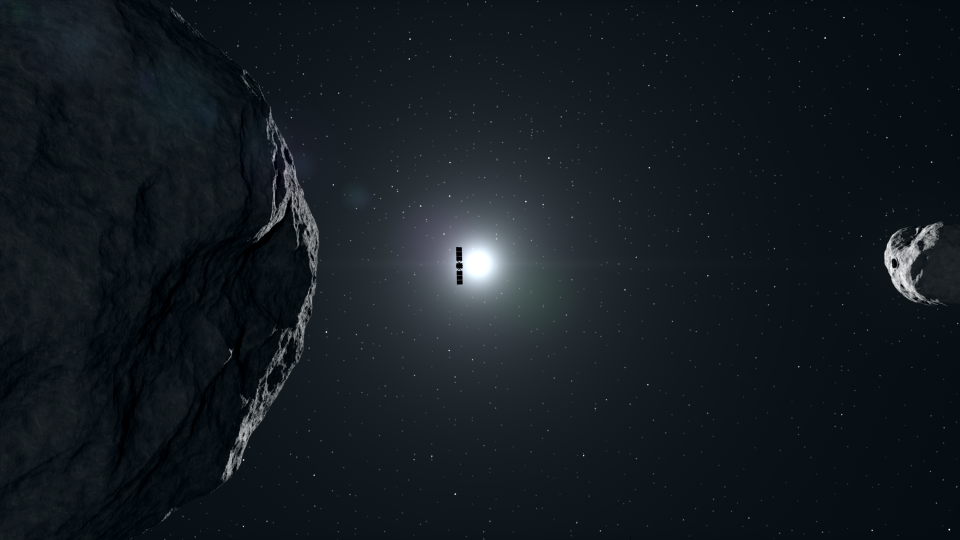
For a hot second back in 2004, it looked like there was a couple percent chance the asteroid 99942 Apophis just might crash into the planet Earth on April 13, 2029. And even if it didn’t hit in 2029, there was a small chance that if it passed through just the right place in Earth’s atmosphere on that Spring Day, it just might come back and hit Earth exactly 7 years later on April 13, 2036.
These were the heady years after the movies Armageddon and Deep Impact when everyone thought they knew just how bad an impact could be, and for that brief period there was a collective excitement for “more data please” as we waited to learn our fate.
Data quickly allowed us to rule out any chance of a 2029 planetary impact, but it would take until 2013 to completely rule out the possibility of a 2036 impact.
While scientists have always known there is reason to believe earth will someday be hit by a catastrophic event, this event was the kind of wake up call needed to get the public and political support needed to launch a new era of asteroid exploration that includes experimentally testing what it takes to move an asteroid from one orbit to another.
DART moved Didymos
On September 26, 2022, the NASA Double Asteroid Redirection Test, or DART mission slammed itself into the moon of a middling sized asteroid named Didymos. That moon was named Dimorphos, and DART made a head-on impact aimed at slowing its roll.
Measuring just 160 meters across, Dimorphos would fit readily onto the campus of your average US High School. Prior to the purposeful crash, it orbited Didymos about every 11 hours 55 minutes, and after the impact it orbited every 11 hours 22 minutes. This 33 minute change greatly exceeded the hoped for change of just over a minute.
This experiment showed that flinging small space craft at potentially dangerous asteroids has the ability to move them into new orbits.
It also showed that things don’t move in the ways we expect.
Mixing up rubble piles
One of our biggest points of confusion with asteroids is their structural integrity. I, for one, dreamed of asteroids so solid we could carve them into space ships like those in some of my favorite books. Reality, however, decided to mock this idea and presented me with rubble piles like Bennu, Ryugu, and Dimorphos – asteroids that have essentially the consistency of ball pits.
And exactly how an asteroid is going to respond when you smash into it will vary with consistency. It turns out, as the DART mission learned, when you smash into a rubble pile, material flies in all directions, you get a massive dust cloud, and the conservation of momentum that occurs with all that material moving in all those different directions can lead to a lot more acceleration than predicted. It is entirely awesome, especially since there was zero chance of us knocking Dimorphos out of its orbit of Didymos.
And, if an asteroid is caught heading toward earth, I don’t think anyone will complain if that asteroid gets moved more than expected and misses Earth by more than we’d hoped for.
The problem comes when folks start trying to move asteroids closer to Earth for use in mining and exploration. So while I’m not generally one to poo poo anyone else’s science, I’m going to request we don’t try and move asteroids towards Earth for a good long time, preferably someday after I’m dead.
DART punched Dimorphos
What the DART mission did to Dimorphos’ orbit is amazing, but because the mission was destroyed during the impact, we don’t know a lot about what was done to this asteroid moon. We don’t know if, like a standard rubble pile, it just settled into a new shape, or if it has a large crater or… something else we aren’t creative enough to think of. We do know that what ever happened, it didn’t match our predictions.
In a new paper in the Planetary Science Journal lead by Derek Richardson, researchers discuss how, Dimorphos’ orbit went from circular to more elliptical, and its shape went from hamburger shaped to football shaped. It may also now be tumbling.
And, yes there is more. Another paper in the same journal, led by Eloy Pena-Asensio, predicts that particles flung out by the DART-Dimorphos collision will make it as far as the Mars and Earth’s orbits, creating new meteor showers for both these worlds. The fastest moving particles could reach the Earth-Moon orbit 7 years after impact, or sometime around 2029 and will continue to orbit into striking range over time. This poses no risk to us or our satellites. It’s just going to be pretty.
Hera set to launch in October 2024
To really understand what DART did to Dimorphos, we really need to go and look.
And this is where the Hera mission comes into play. Currently scheduled to launch in October 2024, this mission from the European Space Agency is slated to fly out to the Didymous – Dimorphos system and take a look at what is now there. If all goes well, Hera will fly by Mars in March 2025 and reach Didymos and Dimorphos in December 2026.
This is your reminder that science is a long game and can require years of waiting.
